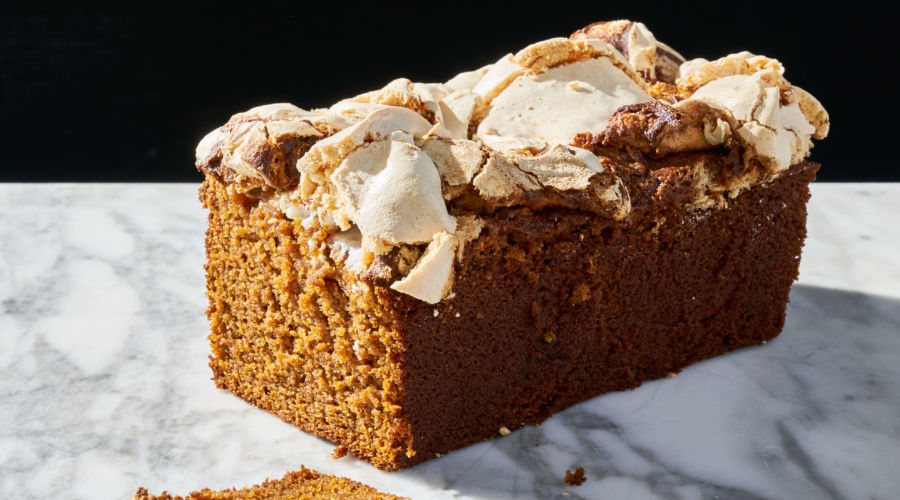Sweet Potato Tea Cake With Meringue

Gentl + Hyers
Welcome to Sunset Suppers, a series of cooking videos shot by chefs and food notables in the first weeks of self-quarantine. These days everyone’s living, working, and cooking differently. That includes us here at Sunset—where our homes have become our offices/studios/test kitchens—and it includes chefs. We asked our favorite chefs in the West and beyond to turn the camera on themselves and share their tips on how to cook easy, nourishing, and comforting food with the limitations of what people have on hand. Similarly we’d like to know what and how you’re cooking, so please share your hacks and home cook victories on social media and tag it #sunsetsuppers!
This is a version of Tartine Bakery‘s popular Pumpkin Tea Cake from their new cookbook, Tartine: A Classic Revisted (Chronicle Books, 2019) by Elizabeth Prueitt.
It has a soft, even, moist crumb and a slight spiciness. The roasted, puréed sweet potato is a nice change from pumpkin, the subtle difference in flavor not overpowered by spice. It is finished with a thick swirl of meringue that is swooped into the top of the cake. Baker Michelle Lee added this delicious dramatic effect.
Kitchen notes: If you are making the sweet potato purée, try to make it the same consistency as canned pumpkin purée. The water content of any vegetable can vary, making your cake wetter or drier.
Reprinted from Tartine: A Classic Revisited by Elizabeth Prueitt with permission by Chronicle Books, 2019.
How to Make It
Preheat the oven to 325°F [160°C]. Lightly butter the sides and bottom of a 9 by 5 in [23 by 12 cm] loaf pan.
This recipe is easily mixed with a stand mixer fitted with a whisk attachment, or by hand with a whisk. Sift together the flour, baking powder, baking soda, cinnamon, nutmeg, and cloves into a mixing bowl and set aside.
In another mixing bowl, beat together the sweet potato purée, sugar, oil, and salt on medium speed or by hand until well mixed. Add the eggs one at a time, beating well after each addition until incorporated before adding the next egg. Scrape down the sides of the bowl with a rubber spatula. On low speed, add the flour mixture and beat until combined.
Scrape down the sides of the bowl, then beat on medium speed for 5 to 10 seconds to make a smooth batter. The batter should be the consistency of a thick purée.
Transfer the batter to the prepared loaf pan and smooth the surface with an offset spatula. Set aside.
To make the meringue topping, pour water to a depth of about 2 in [5 cm] into a saucepan, place over medium heat, and bring to a simmer. Whisk together the egg whites and sugar in the bowl of a stand mixer fitted with the whisk attachment that will rest securely on the rim of the saucepan, but not touch the water.
Continue to whisk until the whites are hot to the touch (120°F [50°C]), about 5 minutes. Carefully remove the bowl from the pan, return to the stand mixer, and immediately begin to mix on high speed until the mixture is very thick and stiff, and holds stiff peaks when you lift out the whisk. This will take 5 to 7 minutes. Add the vanilla and mix to combine.
Spoon the meringue over the batter in the loaf pan and drag a knife through the meringue and batter to create a marbled pattern. Don’t thin out the meringue too much, though. The meringue bakes best when left in thicker patches. Bake until a paring knife inserted into the center comes out clean, about 11⁄2 hours. Let the cake cool in the pan on a wire rack for about 20 minutes, then run a sharp knife around the sides and invert onto the rack, turn right- side up, and let cool completely. Serve the cake at room temperature. It will keep, well wrapped, at room temperature for 4 days or in the refrigerator for 1 week.

